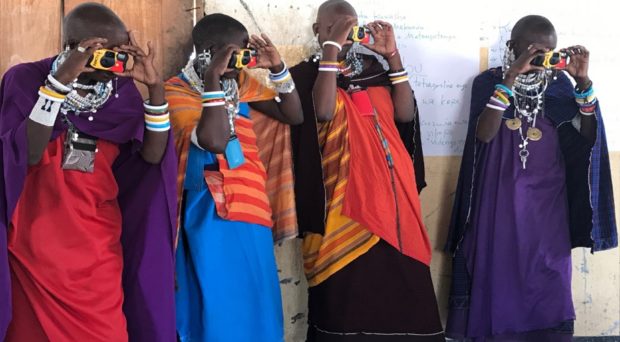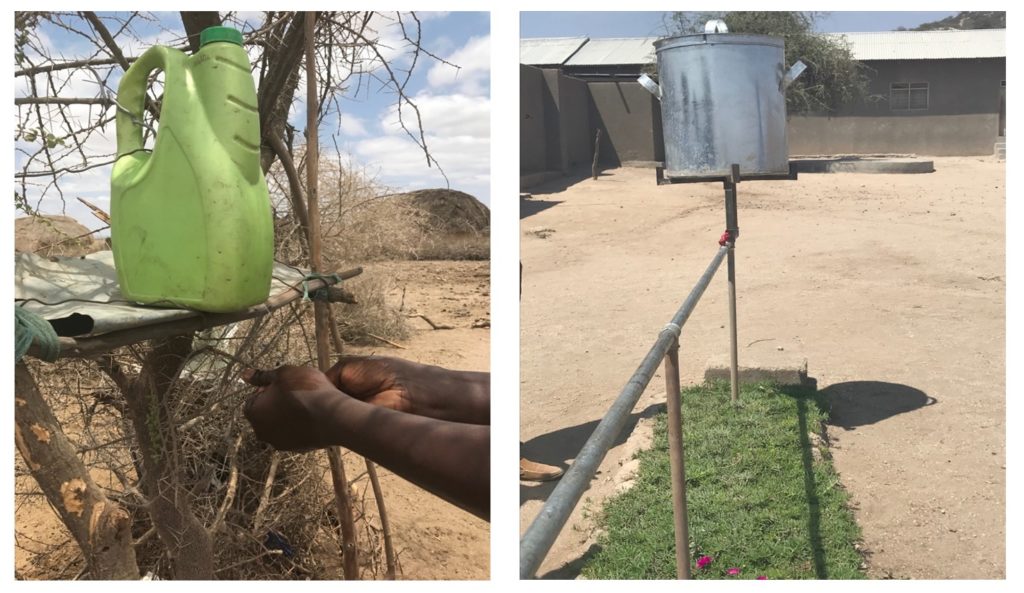
Trachoma Control, Photovoice and Maasai communities
Trachoma is the most common infectious cause of blindness worldwide, caused by the bacteria, chlamydia trachomatis. It mostly effects people living in low- and middle-income countries including the Maasai tribe in Tanzania. Risk factors for trachoma include limited access and use of water; limited face washing, poor sanitation; and crowding. Blinding trachoma is targeted for elimination as a public health problem by 2030, and whilst great progress has been made, hard-to-reach, under-served and marginalized communities can still suffer from high prevalence and resurgence of trachoma infections. A recent study looked at experiences and perspectives by the Maasai communities of Trachoma control programmes, and highlighted important social, economic and environmental barriers that hamper the effectiveness of these control programmes. A key factor underpinning many of these barriers was education and the need for transparent communication, knowledge transfer and community ownership of health priorities.
Photovoice uses cameras as a tool to visually document a specified issue. Participants take photos or videos to capture the issue in their everyday lives to document how they interpret the issue. Photos taken by participants are reviewed either individually or in a group to allow for reflection and stimulate dialogue to ideally lead to social change.
The Maasai have been depicted as “exotic, noble savages” in various visual images from ‘trade cards’ in the late nineteenth century to today contemporary coffee table books. Considered a must see along with the ‘Big 5’ on photographic safaris in Tanzania and Kenya, Maasai are sought out to capture images of them adorned in beads and posing with spears. Yet, in our study, this intervention put Maasai women on the other side of the camera allowing them to control photography.
Photovoice workshops and public health interventions
We used photovoice as part of a program to educate & empower Maasai women on preventing and managing trachoma in their community. In this project, co-developed with the community, participants were asked to share information from a workshop on trachoma with their community and to capture their experiences as educators using disposable cameras. The intervention consisted of a workshop which included photovoice training, participants disseminating knowledge from the workshop within their villages, documentation of trachoma control in the community through photography and ending with a group discussion of the participants’ photos.
The workshop covered basic information on causes and pathology, transmission, signs and symptoms, as well as treatment and prevention of trachoma. We incorporated participatory methods into the workshop.
- Giant stuffed, sorbens, were used to show transmission of chlamydia trachomatis. Baby powder, representing chlamydia trachomatis, was put around the eyes of women. It was demonstrated that when the giant fly landed on their eye it got some baby powder on its feet and then flew off and landed on another woman’s eye and left some baby powder on her eye.
- Story telling: Issues around trachoma infection and treatment were conveyed through a story telling session.
- Video demonstration: a short video by The END Fund & Sightsavers, “Leaky Tin: A Simple Solution”, was shown and simultaneously translated in Maasai language to show a simple and effective way to wash faces and hands using minimal amounts of water. This demonstrates the use of a container with a hole poked into the bottom. When filled with water hand and face washing can be done with the water slowly trickling down. The hole can be plugged with a thorn when not in use.
- Photography: Women were given disposable cameras to document their efforts as educators on trachoma and the challenges raised around trachoma control. They were taught how to use the disposable cameras, what types of images they can capture and the ethics of photography.
Women were then asked to go back to their villages as ambassadors for trachoma control; providing education, advising and mobilizing the community. In this role as ambassadors, women shared their knowledge from the workshop with other women in their village and facilitated discussions on control measures within their socio-cultural context.

Photovoice as a tool for community engagement and empowerment
The most commonly shared photos were of children either washing their faces or displaying clean faces with no flies. Women shared photos of individuals cleaning up trash or human and animal faeces, cleaning clothes and displays of ‘leaky tins’ at their enkang. Some women shared photos of themselves conducting meetings with other women in their village to educate them on trachoma. Very few women shared photos of challenges but of those that did the photos showed traditional practices of treating trachoma-like symptoms and of animal carcases. The workshop only mentioned faeces as a source of flies, and despite this, women concluded on their own that animal carcases were a source of flies. This is a very real source of flies in this community with a lot of carcases of wildlife and donkeys close to their enkang.
The use of photovoice was an effective tool for motivating and facilitating community discussion about trachoma control and ultimately empowered women engaged in the intervention. Discussions prior to the start of the project covered the ethics of photography, something the Maasai are confronted with on a regular basis as phototourism is a source of income for the Maasai but it is also perceived as an exploitation of their people. Engaging the communities prior to the start of the project on the ethics around the use of photography and photovoice meant the community, and Maasai photographers, had ownership and responsibility of the photos, not the researchers, which instilled trust in the project and empowered the women ambassadors. Women discussed the enjoyment in taking photos of family and friends, something they had never done and the thrill of receiving the print photos of people they took themselves.
This project provided a guided and systematic approach for women to discuss openly what risk behaviours are reasonable to change and those that are challenging in their socio-cultural context. Photovoice should be considered for future public engagement as a communication tool on health issues and to empower women to facilitate health promotion.
"control" - Google News
July 30, 2021 at 02:00PM
https://ift.tt/3j6z3JG
Putting Maasai women behind the camera to take control of Trachoma control - BugBitten - BMC Blogs Network
"control" - Google News
https://ift.tt/3bY2j0m
https://ift.tt/2KQD83I
Bagikan Berita Ini















0 Response to "Putting Maasai women behind the camera to take control of Trachoma control - BugBitten - BMC Blogs Network"
Post a Comment